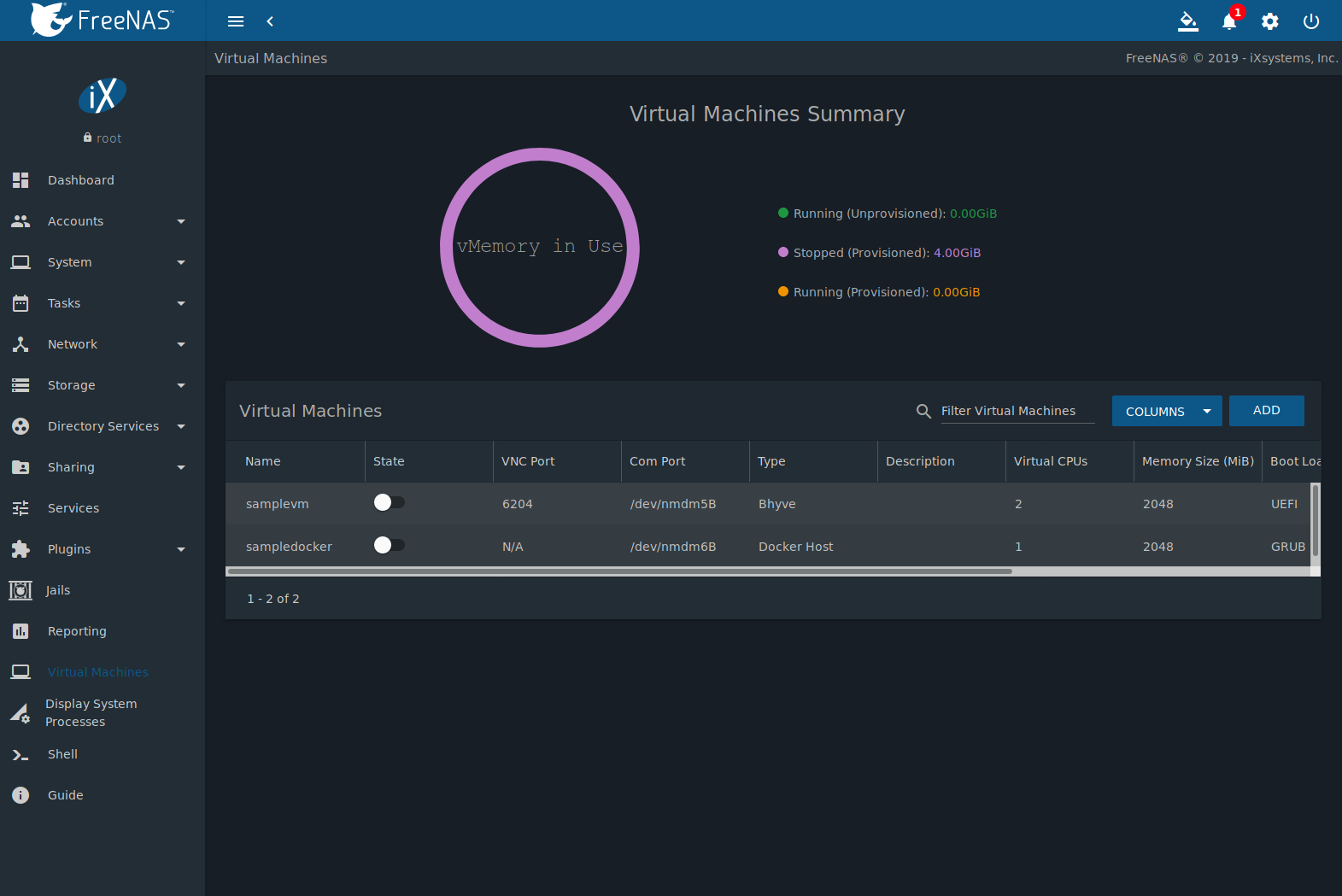So I've used working one and according to above the only issue was with the virtio driver. FreeNAS is the world's most popular open source. The VM's drivers.

FreeNAS is the world’s most popular open source storage OS, and one of the more popular questions I get asked is, “How do I run FreeNAS as a VM?” Due to the number of caveats required to answer that question, I would typically short-circuit the conversation by recommending against it, or only recommend it for test environments since the prerequisite knowledge required to “do it right” can’t be passed on quickly. Somehow over time, this message morphed into a general consensus that “you cannot (or shouldn’t) virtualize FreeNAS at all under any circumstances”, which wasn’t my intention. So, I’m here to set the record straight once and for all: You absolutely can virtualize FreeNAS. Whether you are test driving the functionality of FreeNAS, testing an upgrade for compatibility in your environment, or you want to insulate your FreeNAS system from hardware faults, virtualization can provide many well understood benefits.

That said, while FreeNAS can and will run as a virtual machine, it’s definitely not ideal for every use case. If you do choose to run FreeNAS under virtualization, there are some caveats and precautions that must be considered and implemented. In this post I’ll describe what they are so that you can make well-informed choices. Before we get started though, I should probably start with a disclaimer Warning If best practices and recommendations for running FreeNAS under virtualization are followed, FreeNAS and virtualization can be smooth sailing. However, failure to adhere to the recommendations and best practices below can result in catastrophic loss of your ZFS pool (and/or data) without warning. Please read through them and take heed.
In fact Kamal Hasan and Rajnikant have played supporting roles in the films with Sivakumar in the role between 1972 and 1982. Porantha veeda puguntha veeda serial title song. He started getting offers as the lead hero from 1974.
Now that that’s over with, let’s get started. Pick a virtualization platform When developing FreeNAS we run it as a VM. Our virtualization platform of choice is VMware, and it’s the platform in which the FreeNAS developers have the most experience. FreeNAS includes VMware tools as well. Our second choice for a virtualization platform is CItrix XenServer. FreeNAS has no tools built in for XenServer, but you get a solid virtualization experience nonetheless.
Windows 95 bootable iso torrent download free. Other hypervisors such as bhyve, KVM, and Hyper-V also work, but the development team does not use them on a daily basis. Virtualizing ZFS ZFS combines the roles of RAID controller, Volume Manager, and file system, and since it’s all three in one, it wants direct access to your disks in order to work properly. The closer you can get ZFS to your storage hardware, the happier ZFS is, and the better it can do its job of keeping your data safe. Things like native virtual disks or virtual disks on RAID controllers insulate ZFS from the disks, and therefore should be avoided whenever possible. Using a hypervisor, you typically have a disk on a RAID controller presented to a hypervisor which creates a datastore with a disk on it running FreeNAS. This places two layers between ZFS and the physical disks which warrants taking the following precautions. Precautions • If you are not using PCI passthrough (more on that below), then you must disable the scrub tasks in ZFS.